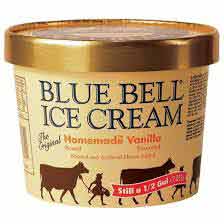 The Blue Bell Listeria outbreak has highlighted the need for improved testing at facilities that make frozen dairy products, according to Fred Pritzker, a food safety attorney with Pritzker Hageman in Minneapolis. Over the last four years, Listeria in ice cream products made at Blue Bell facilities in two states has sickened at least eight people, killing three of them.
The Blue Bell Listeria outbreak has highlighted the need for improved testing at facilities that make frozen dairy products, according to Fred Pritzker, a food safety attorney with Pritzker Hageman in Minneapolis. Over the last four years, Listeria in ice cream products made at Blue Bell facilities in two states has sickened at least eight people, killing three of them.
How did Blue Bell’s Listeria problem go on for years without detection? Part of the problem is that Blue Bell’s plants weren’t regularly tested by state and federal health authorities for Listeria, a bacteria known to thrive in cold temperatures.
Blue Bell manufactures ice cream in three locations: Brenham, Texas; Broken Arrow, Oklahoma and Sylacauga, Alabama. All three locations were inspected regularly, some monthly, by state health officials during the years the outbreak was ongoing. But Listeria tests weren’t a routine part of these routine inspections.
So far, this outbreak includes clusters at hospitals in two stares: a five-person cluster at Via Christi hospital in Wichita; and a three-person cluster at a Texas hospital unnamed by state and federal health authorities. The Kansas cluster has been linked through genetic testing to products produced in Brenham. Genetic testing was also used to link the Texas cluster to products produced in Broken Arrow.
After Blue Bell products made in Brenham and then Broken Arrow were linked to illnesses, spokespeople from the Texas and Oklahoma state departments responsible for inspecting frozen dessert manufacturing plants told Food Poisoning Bulletin virtually the same thing. Texas: “We inspect these facility types monthly. Our last full inspection was February. We cited a couple minor issues but nothing related to this issue.” Oklahoma: the plant is inspected eight times a year. No major problems had been discovered in these inspections, the most recent of which took place February 12, 2015 and March 17, 2015.
However, these inspections do not include tests for specific pathogens like Listeria in the facility or in finished product. Instead, the focus is overall sanitation and the pasteurization process.
What about Blue Bell’s third plant in Sylacauga, Alabama? A state health department spokesman told Food Poisoning Bulletin that plant was last inspected February 19, 2015. However, environmental swabs are not taken during those inspections, nor are products tested for specific pathogens. Instead, samples are tested for coliform and the standard plate count, he said.
Even after Listeria was found in products made in two of Blue Bell’s three facilities, health authorities did not rush to Sylacauga to test products there for Listeria. As of March 31, Blue Bell products made in Sylacauga had not been tested for Listeria by state or federal authorities investigating the outbreak, a wrinkle in the investigation described as “unbelievable.”




